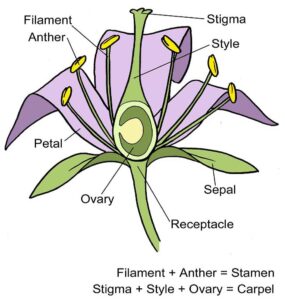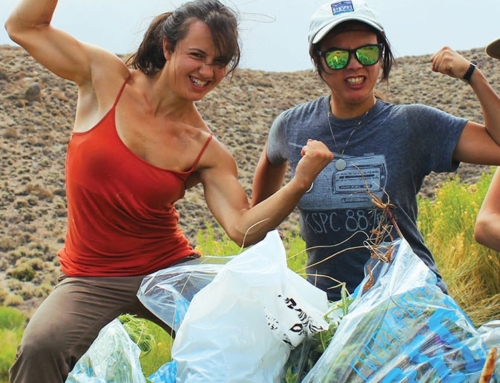Happy National Pollinator Week! This annual celebration is run by Pollinator Partnership and promotes pollinator health. To celebrate and spread awareness of pollinators, we will publish blog posts on our website every day this week that cover different pollinators.
What is a Pollinator?
Let’s start simple on the first day of National Pollinator Week. What exactly is a pollinator?
To learn about pollinators we first need to talk about pollination. Pollination happens when a small grain of pollen moves from the male part of a flower, the anther, to the female part of a flower, the stigma. It is the first step to producing a seed, and the first step to creating more plants. Look outside. There is probably a wide variety of plants outside your window. With that variety comes different methods of pollination. Some plants are wind-pollinated, meaning the pollen is spread via windstorms. Others are water-pollinated. Some can even self-pollinate. Many plants are pollinated by important critters called “pollinators”.

©Royal Horticultural Society
Pollinators unknowingly transport pollen from flower to flower while they feed on nectar or pollen, helping the plants reproduce. They are incredibly important for healthy ecosystems that stabilize soil, clean the air, and support wildlife. Pollinators are also important for our food! One out of every three bites of food grown globally depends on pollinators.
We hope to surprise you with some pollinator insights this week. We will discuss bees, but we’re also going to discuss bats, flies, and moths! There are lots of pollinators worth mentioning that we won’t have time to cover. Did you know that beetles, flies, and wasps can be pollinators? It’s true! If you’d like to learn even more about these surprising species, take a look at the Forest Service’s Pollinator of the Month page.
For a fun activity to teach kids about pollination, check out this pollination activity from the Children’s Museum of Indianapolis. All you need is candy or another treat, a bowl or two, cheetos or cheese puffs, and a fake flower. You can also use paper towels to represent the second flower, and you can substitute paintbrushes to avoid sticky fingers.
Tune in this week for a new pollinator blog post each day of this week, and don’t forget to tag #PollinatorWeek on social media! The lineup for the blog this week is:
Tues: What is a Pollinator?
Wed: Miner Bees
Thurs: Bats
Fri: Moths
Sat: Bumble Bees
Sun: How you can help pollinators
Sources:
https://www.pollinator.org/pollinators
https://www.childrensmuseum.org/blog/real-science-powdery-pollination






